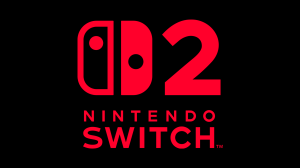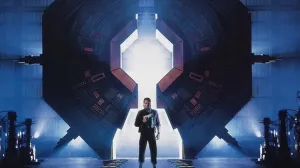
Netflix’s Stranger Things is one my favorite shows in recent memory. While it hasn’t been officially renewed just yet, the executives at Netflix have been talking like a forgone conclusion, and the creators, the Duffer Brothers, say they have ideas. This should come as great news, but instead, it only fills me with worry.
Videos by ComicBook.com
Stranger Things opens with four young boys playing Dungeons & Dragons in the small town of Hawkin in 1983. When the campaign is finished (or shut down by one of the kid’s mother), the others ride home on their bikes. But one of the boys never makes it home. Instead, he runs into something in the dark and goes missing. The synth soundtrack swells into an opening title sequence that evokes the look and feel of a 1980s horror novel. This is one of the most engrossingly atmospheric cold opens I’ve seen on television, and it’s only the beginning. What follows is a clear homage to the best science fiction and horror of the 1980s, drawing heavily on Stephen King, John Carpenter, and Steven Spielberg that trades in much more than cheap nostalgia.
After the boy, Will Byers (Noah Schnapp), goes missing, his mother Joyce (Winona Ryder), contacts Police Chief Jim Hopper, (David Harbour). The investigation leads them down a trail of weird horror and conspiracy. Ryder and Harbour both give great performances, with Ryder displaying all of the frantic determination of a mother searching for her son and Harbour subtlety growing his character out of the shell of bad cop archetype, and the story delivers shivers and moments of genuine unease.
Meanwhile, Will’s friends Mike (Finn Woflhard), Dustin (Gaten Matarazzo), and Lucas (Caleb McLaughlin) begin their own search, and cross paths with a mysterious girl called Eleven (Millie Bobby Brown). Their story becomes a mix of E.T., Stand by Me, and The Goonies, as their continuing search for Will and the mysteries surrounding Eleven tests the strength of their friendships. The story’s strength rests largely on Stranger Things having cast genuinely talented child actors, particularly Brown, who emotes waves of vulnerability and, at times, fortitude while working with very few lines.
The third thread follows Mike’s sister, Nancy (Natalie Dyer), and Will’s brother, Jonathan (Charlie Heaton), who put aside the gap in their high school social standings long enough to further investigate the weirdness going on in Hawkin. This is the weakest of the three story tracks. It’s slowest to get started, the least satisfying by its conclusion, and relies more on happenstance and coincidence than the other stories. Still, solid performances by Dyer and Heaton – as well Joe Keery as Steve, Nancy’s boyfriend who starts off as the mean rich kid in a John Hughes movie – keep it from detracting much from the overall experience, as does an epilog that refuses to put a neat bow on the characters’ relationships.
These three stories run parallel to each other throughout most of the eight-episode season, only coming together towards the end when the final act begins. The series is paced perfectly, telling an eight-episode story in exactly eight episodes, without falling into the excess of Netflix shows like Daredevil and Jessica Jones, which seem to stretch their stories thin over 13 episodes out of a sense of convention. Once these stories do come together, they weave into an incredibly satisfying, tense, and tender finale that leaves just the right amount of questions lingering.
And it is here that my adulation turns to concern. Once you’ve told a perfectly self-contained story, and once you’ve left just the right amount of loose ends untied, why return? I have a hard time imagining what form Stranger Things Season 2 could take that would prove satisfying.
Part of what made the 1980s adolescent adventures that Stranger Things draws from special were that they represented a brief burst of the extraordinary in an otherwise ordinary life. Elliott had to grow up and move on once E.T. went home, and we didn’t get a string of sequels that introduced more and more aliens, diluting what made the original so special. To return to the town of Hawkin and turn it into a Hellmouth-like weirdness magnet for further stories similarly, threatens to take away from the excellent craft of the original eight episodes.
One the other hand, Stranger Things could go the anthology route, like True Detective or American Horror Story, but I fear that what Stranger Things tapped into was such a specific strain of story that trying to repeat the process from scratch would either miss the mark, adjusting the aesthetic until it no longer resembles Stranger Things Season 1, or have a diminishing return, transforming genuine and earnest longing for the stories it pays tribute to into a kind of commodified trope.
Perhaps I’m being too precious towards Stranger Things, and treating it as “too pure for this world.” I hope my misgivings about the show’s future are unfounded, and the Duffer Bros. manage another spectacular season. But I can’t the part of me that would rather keep the series as it is, pristine and complete.
Stranger Things is now streaming on Netflix.

Have you seen Suicide Squad yet? Want to win a Hot Toys Joker figure from the movie? All you have to do head on over to ComicBook.com’s Movie Database or click the image above and rate the movie to enter! A winner will be chosen August 19th, 2016!








